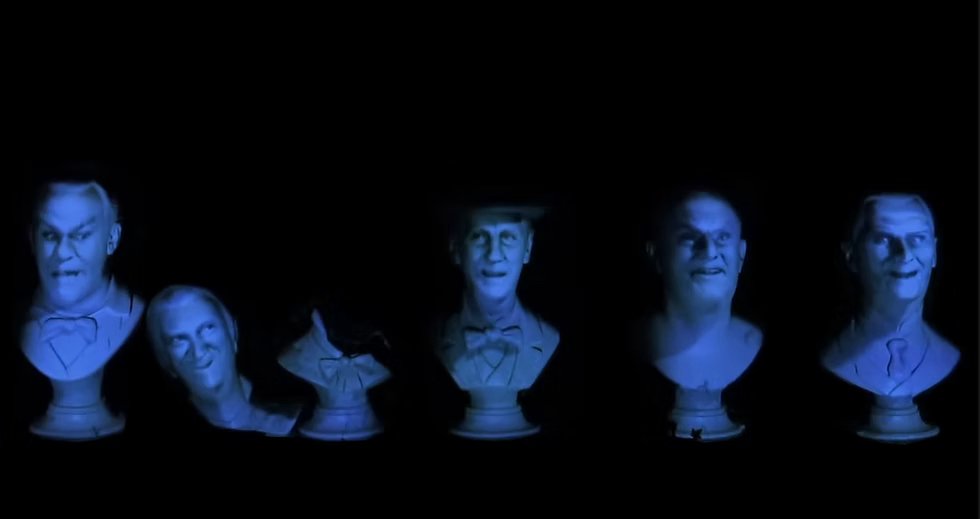HISTORY OF GENERATIVE ART - Projection Mapping
In our History of Generative Art, today we focus on projection mapping, a process of projecting pictures, videos, or animations onto physical surfaces. In contrast to standard projection, which is typically shown on flat screens, this method adjusts the images to fit the contours and details of 3D forms, making sculptures, buildings, and even natural elements a part of the artwork.
While projection mapping is a relatively new development, projection itself has a long history. Early examples include shadow plays and the use of the camera obscura to demonstrate the behavior of light. In the 17th century, the magic lantern was used to project images with glass slides, lenses, and candlelight, and in the 19th century, brighter light sources and photographic slides improved the effect. Still, these earlier methods were mostly limited to flat surfaces.
Czech scenographer Josef Svoboda's live performance, Lanterna Magika, which fused theater and projected film at the 1958 World's Fair in Brussels, is among the earliest known examples of projection mapping. In 1969, Disneyland’s Haunted Mansion used a similar technique by projecting faces onto static busts, creating the illusion of animated sculptures. This effect, later called the “Madame Leota effect”, is one of the earliest uses of projection on a 3D object.
The Haunted Mansion ride, Disneyland, 1969 Source: projection-mapping.org
Josef Svoboda Laterna Magika, 1977 Source: svoboda-scenograph.cz
In 1980, artist Michael Naimark created one of the first art installations, Displacements, using mapped projection. He filmed people interacting with objects in a living room, then projected that footage back onto the same space. The film made it look like the people were still there. Around the same time, Polish artist Krzysztof Wodiczko began using slide projectors to display images with political messages onto public buildings and monuments.
In the 1990s, video projectors became brighter, smaller, and computer-controlled, which opened new possibilities. Artists like Tony Oursler took advantage of small digital projectors to create video sculptures. He often projected moving faces onto doll-like figures and objects. At the same time, academic research in the field began at the University of North Carolina at Chapel Hill with their project “Office of the Future” (1998), led by Ramesh Raskar, which experimented with covering office walls and objects with projected images.
Michael Naimark, Displacements, 1980-84 Source: hcgilje.wordpress.com
Ramesh Raskar, Greg Welch, Matt Cutts, Adam Lake, Lev Stesin, and Henry Fuchs, The Office of the Future, 1998 Source: media.mit.edu
By the early 2000s, digital tools made it easier to calibrate projections precisely to architectural forms. As a result, building facades began to be used in large-scale public art. One of the most influential works in this field is Body Movies (2001) by Rafael Lozano-Hemmer. In this interactive installation, photographic portraits are projected onto urban walls and revealed only within the shadows cast by passersby. Similarly, many contemporary artists and groups, including Joanie Lemercier, AntiVJ, and Shirin Neshat have used projected light to alter perceptions of space.
Refik Anadol projected a work onto the Walt Disney Concert Hall in Los Angeles in 2018 Source, dezeen.com
Since the early 2000s, projection mapping has become a common tool in digital and new media art. It is often combined with generative design, and interactive technology. Studios like TeamLab in Japan create large installations where walls, floors, and water are covered with moving, interactive images. Many artists now use real-time code or AI to create visuals that are projected onto objects or buildings. For example, Refik Anadol projected a work onto the Walt Disney Concert Hall in Los Angeles in 2018.
Projection mapping has connected the physical and digital. It brings images to real spaces, like buildings or objects, through technology. Its history shows how artists have continued to explore how light, space, and motion can change the way we see the world around us.
TeamLab, Waterfalls of light, 2018/2024 Source: theartnewspaper.com






